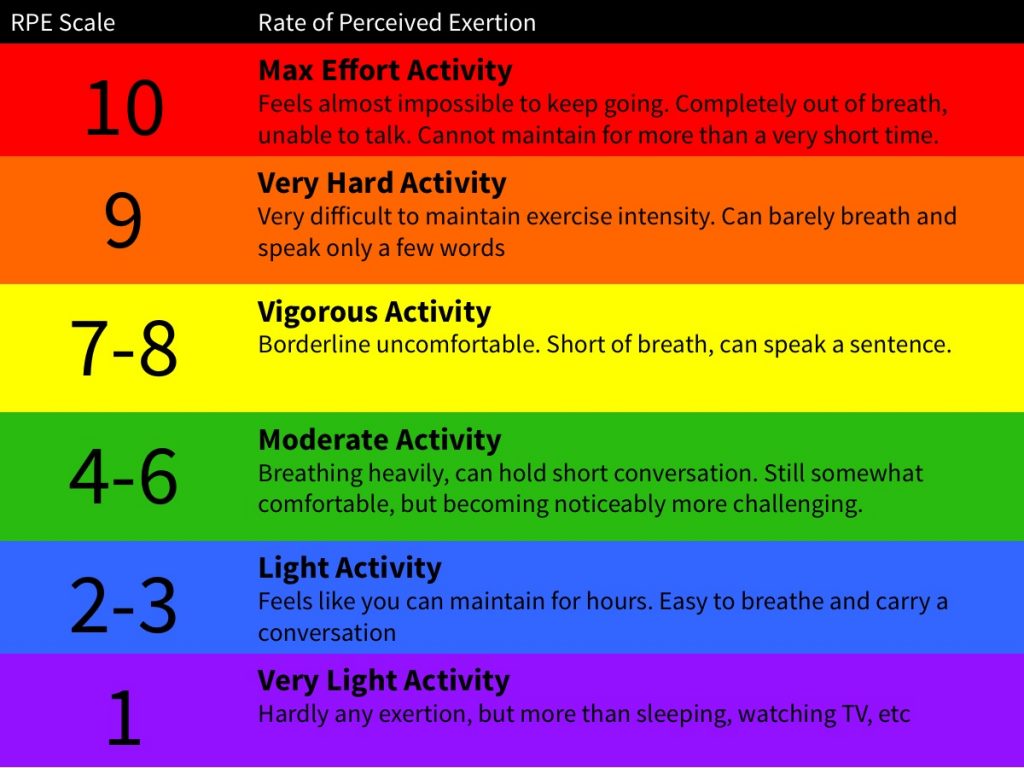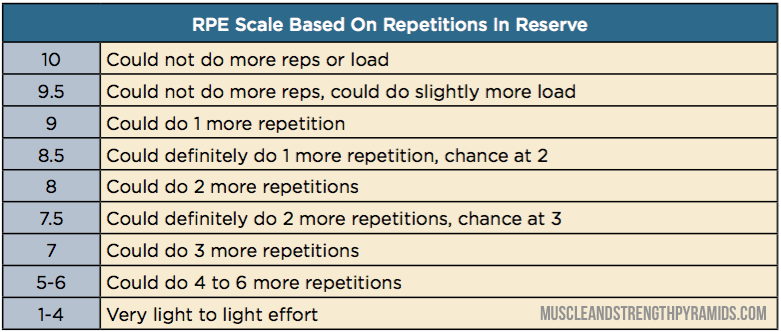Understanding RPE for Beginners
Understand how to use RPE (rating of perceived exertion) to get the most out of your programs and training
In today's post I wanted to talk a little bit about RPE and how I would like you to use it with our training and programming.
If you are here reading this post, I am assuming we are working and training together, but if not, you are more than welcome to stick around as much of this information will hold true for many coaches and trainers utilizing RPE within their training programs.
When it comes to strength training, for all intents and purposes, RPE is how hard or easy something feels. As the name suggest, I am asking you to assign a rating in regards to how much energy you have to exert to complete a task on a scale from one to 10.
1 meaning the task was REALLY EASY, almost menial; and 10 meaning it was near impossible to complete, but somehow you did it.

This is the basic premise of RPE. It is a subjective rating that allows us to adjust training based on some quantifiable feedback.
Why is RPE Important?
Training optimally requires the adjustment of different variables - load, sets, reps, intensity, rest intervals, range of motion, etc - RPE gives us a way to make adjustments to these variables based in how you feel on a given day.
It is important to understand that your training doesn't exist in a vacuum; meaning, it is affected by different variables that are seemingly unrelated to strength.
Things such as stress - which includes but is not limited to emotional, family, work, etc. - sleep, nutrition, and your ability to recover.
Training is also a stressor, albeit a positive one, but a stressor nonetheless.
So having a means to modify training, based a how you are feeling on a given day, allows you to manage your program effectively from session to session.
And when we think about training in terms of improving our longevity, this becomes an important skill because we will inevitably encounter times in our life where our fitness may need to take a back seat; and having a means to modify your plan without neglecting it all together, will allow you to sustain your physical health for the long haul.
Different Ways to Use RPE
Now as you advance with your training so will the utilization of RPE.
A more advanced, but more objective RPE scale is the RPE/RIR scale introduced to us by Mike Tuchscherer.
Now this is more directed at strength training and requires you to have experience training under load, but when used correctly it will allow you to be more precise with your training.
RIR stands for reps in reserve which means that your rating of a given effort will depend on how many MORE reps you THINK you were able to complete with a given load.

For example, if you were performing a set of barbell back squats with 135 lbs for 8 reps, and after you completed the set you felt as if you may have been able to perform 3 more reps if you absolutely had to, you would rate that set as a 7 on the RPE/RIR scale.
As you get more familiar and more experienced with strength training the RPE/RIR scale will allow you to detemine loads based on the RPE you would like to finish with.
This is often referred to as an RPE Stop.
RPE Stops
An RPE Stop is a something we utilize often within our training once you have advance to this stage.
When an RPE Stop is assigned, you will determined the amount fo weight (load) to used based on the RPE specified.
For example, if you were assigned to do a set of bench press for 7 Reps with an RPE Stop of 9, you would choose a weight which would allow you to perform 7 reps and at the time of completion you should feel like you would have been able to perform one more rep if you ABSOLUTELY had to.
RPE Stops allow for variation with loads based on how you are performing that day. Some days your loads will be heavier others lighter, but the intensity at which you experience those loads will be relatively the same.
Managing your training with this form of auto-regulation will allow you to continue training while minimizing burnout or fatigue.
To read a bit more on this topic, check out an excellent article by Revive Stronger
by Revive Stronger
